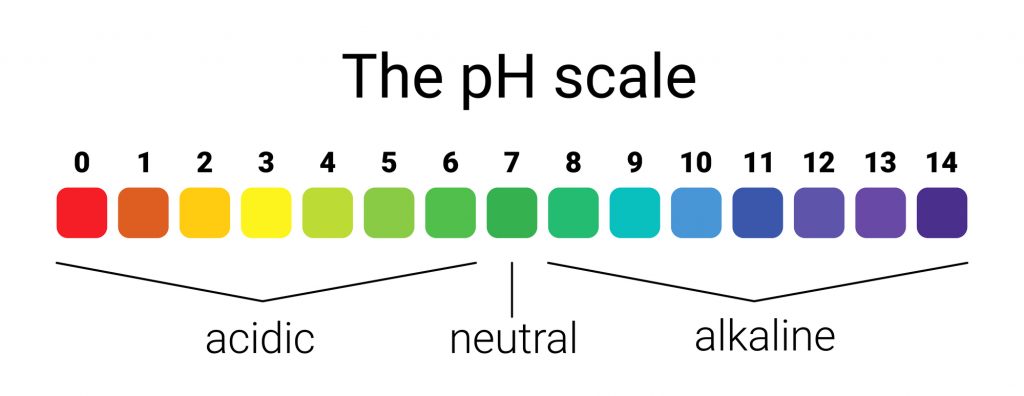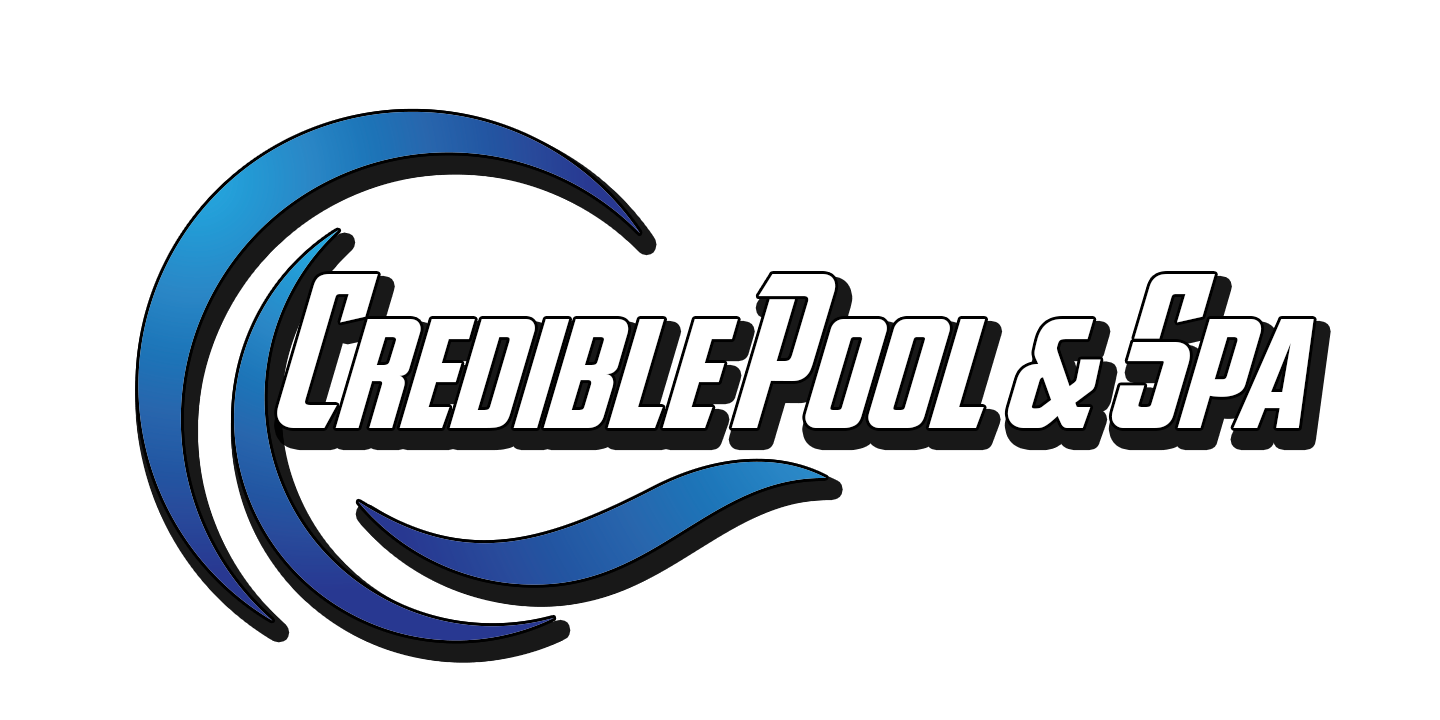Keeping your pool water balanced is one major key in proper pool ownership, which is why we found it extremely important to offer our customers free water testing. There are a number of different factors and minerals that we look at when we test your pool water. Teaching you the best practices when it comes to pool ownership is something we love to do, so we’ve broken down what we look at in a water test to help you understand what it all means.
Total Alkalinity
This is the measure of alkaline material in your pool such as carbonates, bicarbonates and hydroxides. These are necessary for proper pool water balance.
Ideal range: 80 – 120 ppm. (parts per million)
Alkalinity is your pool water’s ability to resist change in your pH levels. It acts as a buffer so when anything is added to the pool that would otherwise affect pH levels, the changes are much more manageable. It helps to keep pH levels within the proper range and prevent severe changes to your pool water balance.
This is one of the first things that we look at when we get your water test results. We recommend correcting your total alkalinity before pH to ensure efficient and proper correction of your pH levels, and because it will make reaching and maintaining the proper pH levels easier.
pH
This refers to the degree of acid or base activity in your pool water. This is incredibly important to monitor in order to keep your swimmers safe and healthy.
Ideal range: 7.2 – 7.8

As the pH scale shows, anything zero to seven is acidic, with zero being the greatest acid activity. When your pool water’s pH is below 7.2, it is considered to be corrosive. This is harmful to swimmers’ and can burn skin and eyes. It can etch away at plaster, plumbing, pool surfaces, and the metals in your pool equipment and severely shorten the life of your liner. Water that is acidic will consume larger amounts of chlorine as the chlorine is less effective in these conditions.
Anything above a 7 on the pH scale is considered basic or alkaline (not to be confused with alkalinity.) A too-high pH level will increase the chances of scale forming and your pool water becoming cloudy as calcium becomes less soluble and ends up just floating around your pool. Bacteria is more likely to thrive in basic water. Swimmers’ skin may feel somewhat slimy. Since a too-high pH can also affect the way chlorine sanitizes your water, this can expose swimmers to potentially harmful microorganisms.
Calcium Hardness
This is the level of calcium that has dissolved in your pool. Calcium, or calcium carbonate, is a naturally occurring chemical compound. Issues involving calcium are typically a result of a larger chemical imbalance in your pool water.
Ideal range: 200 – 400 ppm.
Too much calcium in your pool water can corrode fittings, leave rust stains, and create tiny leaks in your pool equipment. Calcium is actually more soluble in cold water. Calcium buildup and scaling is a common problem that we see often in pool heaters.
Too little calcium can lead to problems as well. Calcium is necessary to balance your pool water. If there isn’t enough, your water will naturally try to balance itself. It will do this by pulling calcium from other places, like plaster, metal fittings and heat exchanges. It can destroy fittings, cause leaks and leave stains.
(Free) Chlorine
Your free chlorine reading specifically tells you how much chlorine is available to sanitize your pool water.
Ideal range: 1 – 3 ppm.
Chlorine is the main chemical that sanitizes your pool water. Even if you have a salt water pool, your pool water is still chlorinated – it’s just a different process. (Bromine pools are a different category.)
We check to make sure that your free chlorine is higher than your combined chlorine, or the chlorine that has already combined with the contaminants it’s attacking. This ensures your pool water is being properly sanitized. We keep it easier for pool owners by having them focus more on their free chlorine level to keep swimmers safe.
Phosphates
These are a chemical compound that contains Phosphorous, a naturally-occurring, non-metal element. These enter your pool in many ways, including dead leaves, twigs, dirt, natural water, lawn fertilizer and pesticides, swimmers, adding water, and any phosphorous-based pool cleaners.
Ideal range: 0, or as far under 200 as possible.
High phosphate levels turn your pool water green and cloudy and make it extremely difficult to maintain proper chemistry. Phosphates feed algae and mask your free chlorine and eat it up quickly. Proper chlorine levels are necessary to keep your pool inhospitable to algae. It can clog up your filter and hurt your pool liner. It could also affect the health of swimmers.
Low calcium levels can lead to high amounts of phosphates in your pool, which is one reason why a low level of calcium is necessary for proper pool water balance.
The presence of phosphates makes pool maintenance more expensive and time consuming. There are day-to-day tasks you can do to help prevent phosphate levels getting too high. These include:
- Preventing lawn fertilizer or pesticides from making contact with your pool area.
- Skimming out debris with a skimming net to remove them from your pool.
- Vacuuming dirt and debris from your pool walls and floor.
- Checking your filter regularly and cleaning it when necessary.
Tips for collecting a water sample
Ideally, your pool should be running for at least an hour before collecting a sample.
Use a clean, empty water bottle or container that you can tightly seal for your sample.
Collect the sample from elbow-deep in the water, away from skimmers and return lines.
When you come in for a water test
We ask that you be aware of how many gallons your pool holds or at least the dimensions of your pool so we can figure out how large it may be. This will help us get a better understanding of what is going on with your water and how to treat it.
We will remove the water that we need for your sample and run it through our SpinLab Water Test. We’ll create you a profile within our testing system so we can keep track of your pool water chemistry over time. It takes just a minute or two to run the test and get the results.
Once we have the results, we will identify where the water imbalances are. We will ask you a few questions regarding the maintenance you’ve done, the chemicals you have recently added, and any other possible factors that could be disrupting your pool water balance.
With all of that information, we will recommend products and a course of action to help correct any water chemistry issues and to get your pool back to pristine swim conditions. We will most likely recommend a simple test with testing strips to see how well your pool water takes to the action plan. You’ll typically wait 24-48 hours after adding any products to your pool before following up with a test strip to give your pool water time to adjust for an accurate reading.
Not sure about the results you get from the test strip? Feel free to bring another sample into the Credible Pools store for another free water test.

